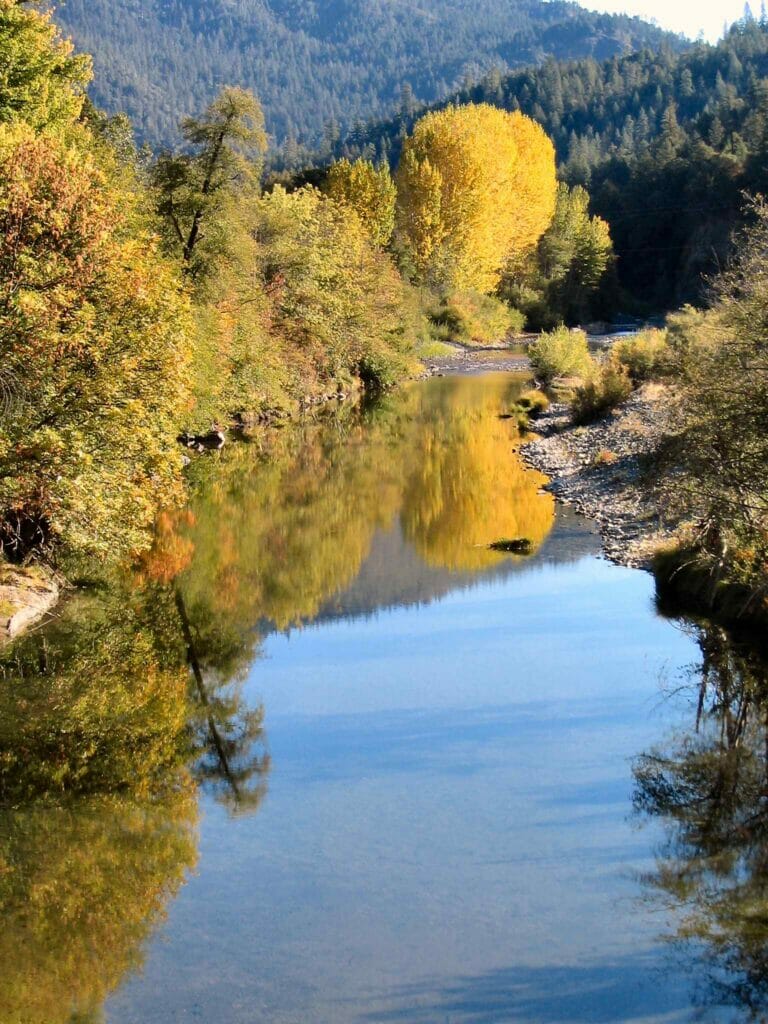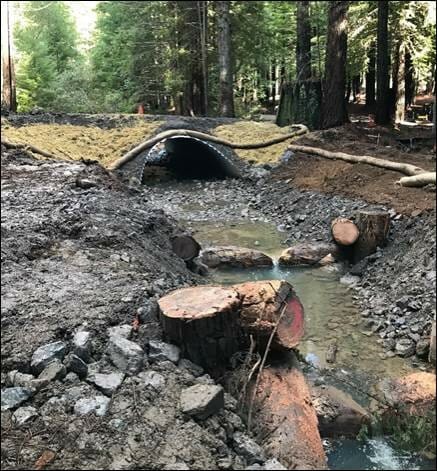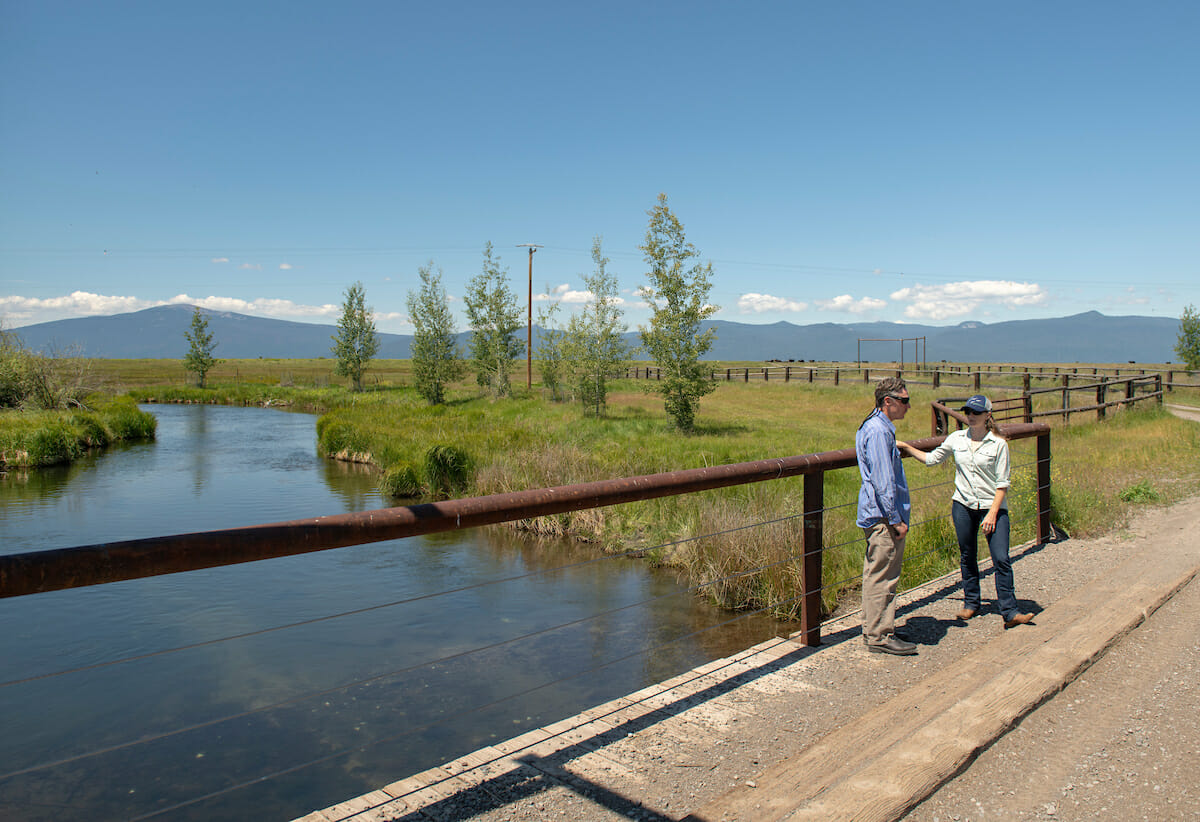In a year of exceptional drought, we’re working to improve conditions for wild and native trout and salmon from the Smith to the San Gabriel
In 2021, Trout Unlimited continued to deliver exceptional conservation results for salmon, steelhead and trout in California. In the face of one of the most severe droughts in state history, our field projects and advocacy improved fish passage, water quality and water use efficiency, dry season flows, and habitat for native and wild salmonids from the Smith River to the San Gabriel River — and helped landowners, working landscapes. water suppliers, and outdoor recreationists at the same time.
Advocacy
2021 was a hard year everywhere in the West due to the punishing drought, now in its third year, as well as the ongoing Covid-19 pandemic. In the Klamath River basin, TU’s efforts continued to mitigate the effects of drought and climate change on people, fish, and wildlife. TU staff and grassroots stepped up our activism in support of removing four old fish-killing dams, and pushed hard for emergency drought assistance for upper basin agriculture, Tribes and communities and for funding to significantly expand our water quality and fish passage restoration efforts above Klamath Lake. In a major milestone, the Federal Energy Regulatory Commission approved the transfer of the operating license for the Lower Klamath Project from PacifiCorp to the Klamath River Renewal Corporation, and the long campaign by TU, the States of California and Oregon, and our Tribal and conservation partners to take out the four dams and restore the Klamath’s salmon and steelhead runs remains on track, with dam removal to begin in 2023.

On the legislative front, TU’s leadership among sporting groups to pass three federal bills that would better protect habitat and fishing and hunting opportunity on public lands in California helped get this package of legislation to pass the House and to gain a hearing in the Senate.
Our advocacy in Sacramento helped secure a monumental investment of $15 billion for climate resilience and drought response, with significant new sources of funding for everything TU does. Highlights from the summer drought funding package TU supported include new money for streamflow enhancement, dam removal, systems upgrades for state water regulatory agencies, and for water rights and restoration project permitting and enforcement at both the state water board and the Department of Fish and Wildlife. We helped pass two bills to accelerate the pace and scale of habitat restoration, including one sponsored by TU to reduce liability exposure for private landowners who support state-funded conservation projects on their lands. In addition, TU helped the State of California launch its 30 x 30 initiative to protect fish and wildlife, make lands and waters more resilient to climate change, and enhance equitable access to the outdoors.
Restoration
In April, TU’s partnership-driven work to reduce or mitigate the impacts of climate change on trout and salmon and to help make California’s cold-water resources more resilient to hotter and drier conditions was awarded $4.24 million from the Wildlife Conservation Board for four grants, which will underwrite streamflow enhancement, fish passage improvement and water management science projects in important steelhead and salmon tributaries along the North Coast and in the Mt. Lassen Foothills. TU’s California Water Program completed two major fish passage projects in the Carmel River watershed to help native steelhead, and advanced other flow and fish passage enhancement projects in tributaries to the Russian and Sacramento Rivers. Our project on Cachagua Creek (Carmel River spawning and rearing tributary), for example, resulted in a strong partnership with the Esselen Tribe of Monterey County, provided passage at all flows for steelhead, and dramatically improved access and safety for residents of a low-income community. The six-year project persisted through COVID-related supply chain issues, wildfires in two consecutive years, and other challenges.

This year, our North Coast salmon and steelhead restoration program completed nine projects in some 17 miles of tributary streams to the Eel, Navarro, Noyo, and Ten Mile Rivers that enhanced fish passage, habitat, and water quality. Our Lawrence Creek Project in the Eel River watershed was named one of the Waters to Watch for 2021 by the National Fish Habitat Partnership. TU also partnered with the Salmonid Restoration Foundation to produce a second Large Wood Technical Field School to educate stream restoration practitioners in best practices for placing wood in streams to improve habitat complexity for fish. And in December, the NCCP was awarded grants totaling just over $2 million for three restoration projects under California’s Fisheries Restoration Grant Program, in the Navarro, Albion, and Big Rivers.
In 2021, our Conservation Hydrology team continued to grow our network of streamflow gages and groundwater monitoring wells in headwaters critical for salmonids, providing the scientific foundation for on-the-ground streamflow restoration and policy work throughout the state. The data generated by our gages — now the largest non-governmental stream gage system in California — are used by a variety of agencies and conservation groups to prioritize and permit streamflow and meadow restoration projects, monitor project effectiveness, study surface and groundwater interactions, determine ecological responses to streamflow, estimate human water demands in coastal watersheds to assist streamflow project prioritization and development, and conduct water availability analyses for water rights permitting.
Science
In 2021, TU’s California Science program launched “Reorienting towards Recovery,” an unprecedented three-year collaboration between NGOs and the State Water Contractors. This ambitious experiment is designed to bring together water managers, agencies, tribes, fishing interests, and others with a stake in recovery of Central Valley salmon and steelhead to participate in a structured decision-making process and to find consensus on a suite of common actions to advance salmon recovery that also equitably balance diverse values. Initial funding for Phase 1 of this initiative was provided by the State Water Contractors, and in July the Delta Science Program provided a significant grant to fund Phases 2 and 3.
As TU’s CEO Chris Wood often reminds us, conservation is a long game. Most of our restoration projects require years to be completed. Successful policy advocacy can take decades (for a prime example, look no further than TU’s efforts to ensure coldwater habitats remain protected for water quality under the Clean Water Act). While TU’s California Program delivered numerous strong conservation outcomes in 2021, on the ground and in the halls of Congress and the California legislature, perhaps the primary takeaway from this very challenging year is that our pragmatic, partnership-driven formula for success — and our exceptional staff and grassroots activists — works well in all conditions… and simply eats big challenges for lunch.
Wishing everyone a happy, healthy, and fishy 2022.



